Outdoor clothing sets itself apart from casual apparel by its functionality as it is more crucial how it performs under various conditions than how it corresponds to the current fashion. That entails that outdoor clothing is often described with various technical terms which may be more or less comprehensible. Below we have made a glossary of some of the terms which relate to outdoor clothing, which we have sometimes grappled with. If you are missing an explanation for a certain word or term within outdoor clothing, drop us a line in the comments section below and we will get right on it!
Articulated tailoring/patterning
Articulated tailoring on outdoor clothing means that the garment in certain areas (typically around the major joints, like knees, elbows and shoulders) has been constructed in a manner that provides the best freedom of movement by mimicking the movements of that body part. Sleeves are for instance often simple long tubes of fabric, but if they feature articulated elbows then the sleeve will consist of more fabric parts and/or seams around the elbow area.
Back neck tape
An extra ribbon of fabric sewn into the back of the neck of especially base layers, but also some mid-layers to keep the neckhole from stretching out over time.
Base layer
A base layer is the layer which you wear closest to the skin and is responsible for wicking potential perspiration to the next layer. It should also be breathable and help to maintain your body’s natural temperature. Base layers include underwear, but also the top you are wearing immediately on your skin, whether it has long or short sleeves. Read more in the article Comparison of Base Layer Materials.
Chin guard
The chin guard on the collar of a jacket protects the skin on your chin and neck from the abrasion from the rough zipper. The chin guard is simply a piece of fabric which is stitched so it covers the top of the zipper. It is often combined with a storm flap (see definition below) covering the in- or outside of the zipper. The chin guard can also work as a “zipper garage” which prevents the zipper from slowly sliding down and opening.
Cold spot(s)
The term is mostly used with regards to down jackets, jackets with synthetic insulation and sleeping bags where the construction can cause the insulation to bundle up in some areas and thus cause cold spots in others, usually close to stitched seams.
Drawcord/drawstring
A drawcord is a (usually) elastic cord which is encased in a fabric tube, mainly at the hem of a piece of apparel or gear. At the opening of the fabric tube, there is usually some sort of drawcord toggle which can be used to loosening or tightening the drawcord. A drawcord is mainly added to apparel to optimize fit (for example around your waist, ankles, head etc.) and/or to keep the body-warmed air in and cold air out.
DWR-treatment
Most hiking pants and shell layers are treated with DWR (Durable Weather Repellent), as this treatment prevents the garment from becoming heavily soiled or saturated with water in case of rain. The latter works by the DWR forming microscopic, tightly-packed vertical “spikes” on the surface of the material, thus forcing the water to form round droplets that bead up and slide off the fabric – the so-called beading effect. For the sake of both the environment and mankind you should choose PFC-free DWR-treatments.
Elasticated cuffs
Especially midlayers are often equipped with elasticated cuffs, which means that the end of each sleeve feature a more or less narrow elastic fabric. The purpose of elasticated cuffs is to keep the body-warmed air in, and keep cold air out from the sleeves.
Flatlock seams
Unlike regular bulky seams, flatlock seams lay flat as they are made by placing two pieces of fabric side-by-side with only little overlap and stitching the raw edges directly together. Flatlock seams are mainly used and useful for tight-fitting base layers, where the absence of a bulky seam reduces the risk of being chafed. Read more in our article about flatlock seams.
Gusseted crotch
A pair of pants as such consist of four large pieces of fabric (and x number of smaller pieces) – a front and a back piece for each leg. All four pieces are usually joined in the crotch area which not only creates huge pull and stress on the seams there, but also quite some bulk of fabric from the various seams being joined in a “knot”. A gusseted crotch means that a small piece of fabric has been sewn into the crotch area to create more freedom of movement and more comfort as you avoid the four parts being stitched directly together, and the bulk that entails.
Hydrostatic head
The hydrostatic head indicates how water-resistant the fabric of a water-proof garment is. It is measured in millimeters and indicates the pressure of water required to penetrate the fabric. The hydrostatic head of a fabric is determined by putting a sample of the fabric over the bottom end of a universal tube and then pouring water into the tube until the fabric leaks. For example, a hydrostatic head of 20.000 millimeters indicates that the column of water in the tube was 20 meters (66 ft.) high prior to leaking. Read more in the article Rainwear: MVTR and Hydrostatic Head.
Layering System
A layering system combines different layers of clothing with each their qualities and characteristics to suit the weather (wet/dry, warm/cold, windy etc.), activity and activity level – from high intensity phases to rest phases. There are three types of layers – the base layer, the mid layer and the shell/outer layer. You will always be wearing a base layer (unless you hike nude), while the mid or outer layer can be added or removed depending on your need for extra warmth or protection against the elements respectively. Read more in the article What to wear for Hiking.
Mid-layer
The mid-layer of your layering system (see explanation above) is mainly responsible for adding warmth, although it can also provide some very basic weather protection. A down jacket does, for example, also offer some protection against wind and very light rain. Read more in the article Comparison of Mid Layer Materials.
MVTR
MVTR stands for Moisture Vapor Transmission Rate and indicates how much water vapor can pass through a fabric from the inside out in grams per square meter per day. The term is mostly used for water-resistant/water-proof (hard) shell layers where breathability can be a problem. A waterproof garment should indeed be able to transfer perspiration (in the form of water vapor) to the outside as you would otherwise soak in your own sweat. Read more in the article Rainwear: MVTR and Hydrostatic Head.
PFC-free
PFC is short for PerFluorinated Compound, and for many decades most DWR-treatments (see above) contained PFCs because they are very effective in repelling water, dirt and oil from various fabrics. However, PFCs have since been linked to a number of health concerns, and now many outdoor brands are trying to use only PFC-free DWR-treatments. Read more in the article The Use of PFCs in the Outdoor Industry.
Pit-zips
Pit zips are also called ventilation zips, and are used for just that: To ventilate your torso when you are feeling too warm – usually inside a robust shell jacket. They also help perspiration to escape faster as they are placed in the arm pit area. The downside of pit zips is if they are felt as extra bulk under your arms and/or limit your freedom of movement.
Pull loops/Zipper loops
Pull loops are pieces of string, ribbon or fabric attached to the pull tab of a zipper in order to make it easier to open or close the zipper with gloves on. Pull loops are sometimes referred to as zipper loops.
Raglan sleeves
A sleeve construction where the sleeve is joined to the body of the garment with a diagonal seam that extends from underarm to the bottom of the neck collar, as opposed to conventional set-in sleeves which are joined to the body of the garment along the armhole. Raglan sleeves provide good freedom of movement and entail that there are no seams in the area where the straps from a backpack could weigh down on your shoulders, and thus eliminate the possibility of chafing from such.
Ripstop
Ripstop fabrics are synthetic fabrics which have been woven in a manner which prevents a small tear in the fabric to spread further. This is usually done by reinforcing the fabric with weaving in a double thread at regular intervals. Ripstop fabrics are usually used for shell layers as well as backpacks and sleeping equipment.
Shelf bra
Tops with a built-in-bra usually feature a shelf bra or liner bra, which consists of an extra layer of tight-fitting elastic fabric over the breasts. Together with a broad elastic band under the breasts, the shelf bra gives you support by compressing your breasts against the chest wall. The tighter the band and the liner, the more support you will get. For larger cup sizes, the shelf bra doesn’t provide more than low to medium support.
Shell layer
The shell layer or outer layer of your clothing is mainly responsible for protecting you against the elements – like rain or wind, although it can also provide warmth in some cases. A ski jacket or jacket with synthetic insulation can for example be quite warm, and sometimes worn directly over your base layer. Read more in the article Comparison of Shell Layer Materials.
Storm flap/wind flap
The storm flap (or wind flap) on a jacket is a long strip of fabric which covers the zipper to protect the wearer from rain, wind or cold air coming through the teeth of the zipper – especially if it is not a waterproof zipper. The term “storm flap” especially applies to an external strip of fabric, but it can also be used with regards to an internal flap which also prevents the zipper from chafing or catching on to the fabric of the layer worn underneath.
Taped seams
Taped seams are generally used on high-quality shell layers, i.e. water-proof rainwear, to increase the water-resistance of the garment. If a garment has taped seams it means that the seams have been sealed by having a thermoplastic tape applied under heat and pressure instead of being stitched together. The problem with stitched seams on rainwear is that the stitching creates tiny holes in the fabric – which enable rain water to enter. Read more in this article from TressPass.
Thumb-holes
If the sleeves on your garment are equipped with thumb holes, it simply means that there at the end of each sleeve is a hole that you can put your thumb through or not. The sleeves are typically also a bit longer than usual. The point of thumb holes is that you can keep your hands warm(er) without using gloves and thus have the full dexterity of all your fingers – a bit like fingerless gloves.
Underarm gussets
Underarm gussets are insets of fabric stitched into the underarm area of a sleeve to provide extra freedom of movement. Underarm gussets are sometimes used together with or as a part of articulated patterning (see above). They are seen on both base layers, mid-layers and shell layers.
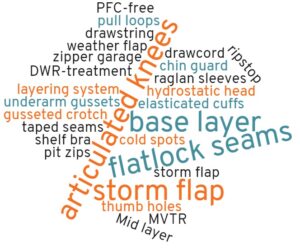
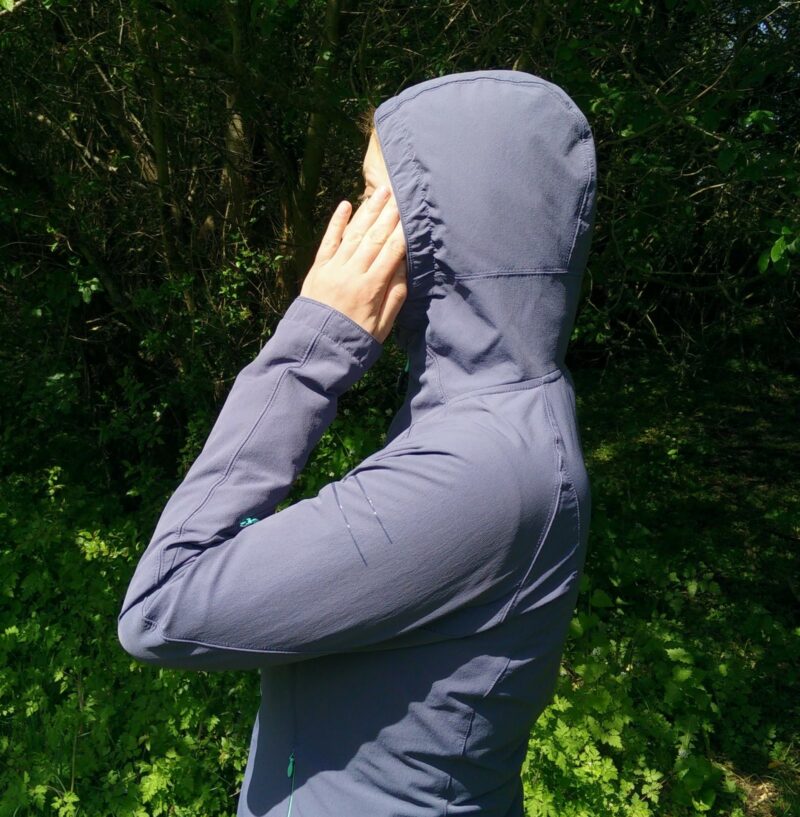
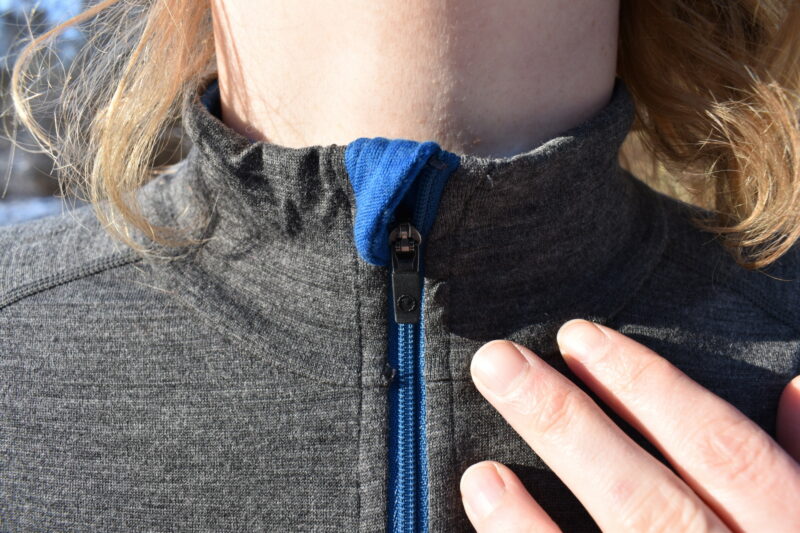
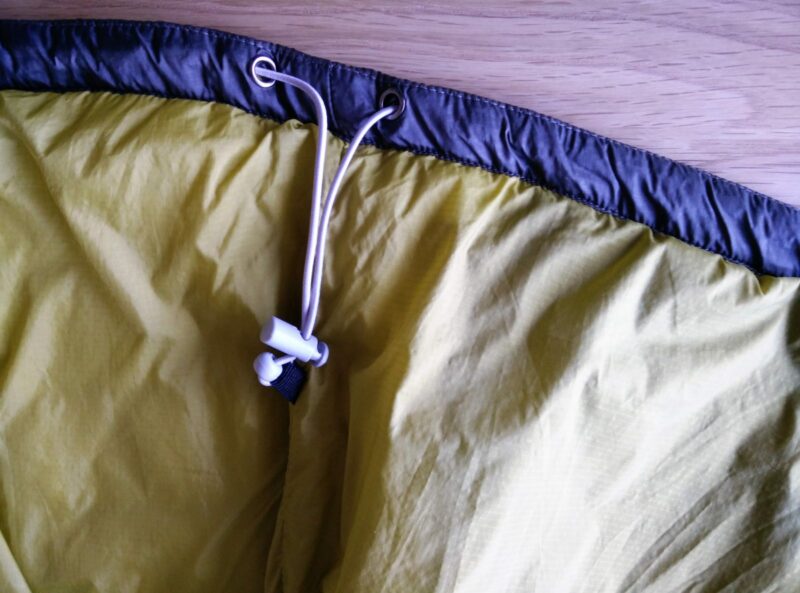
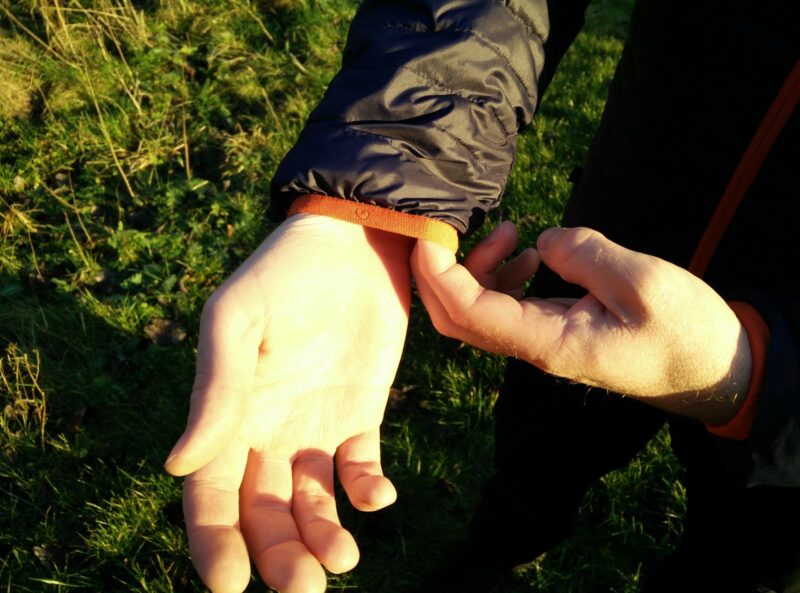
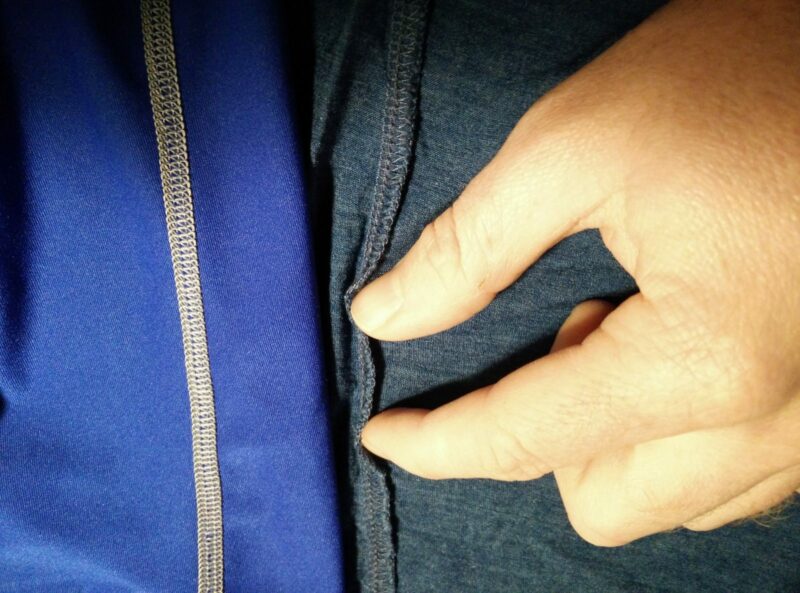

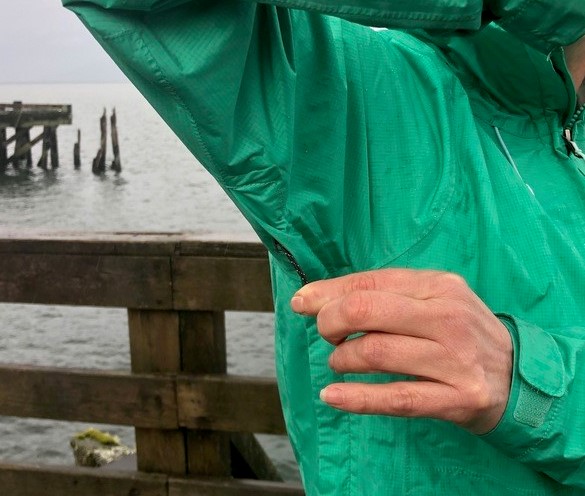
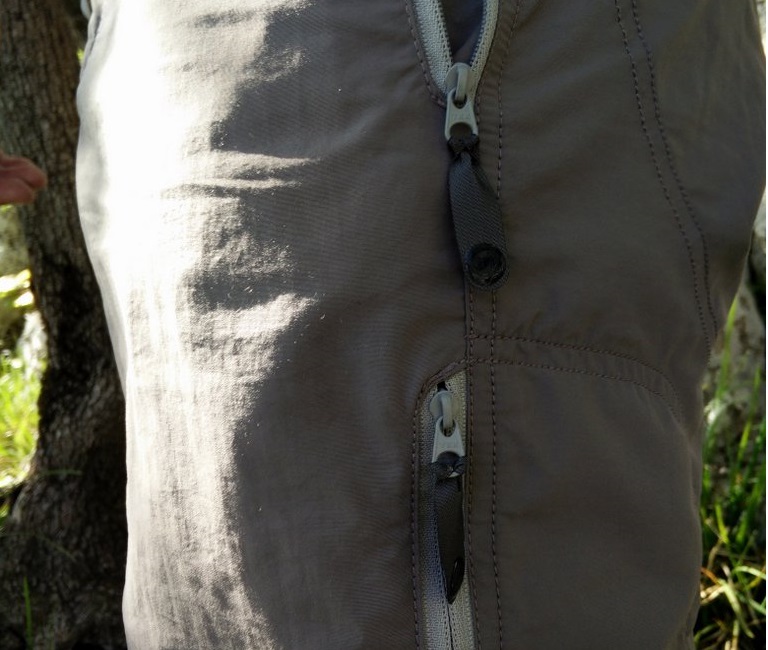
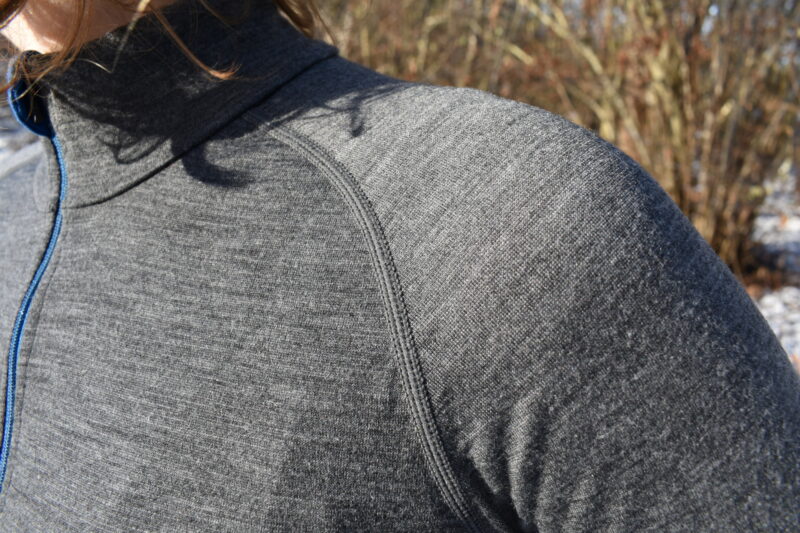
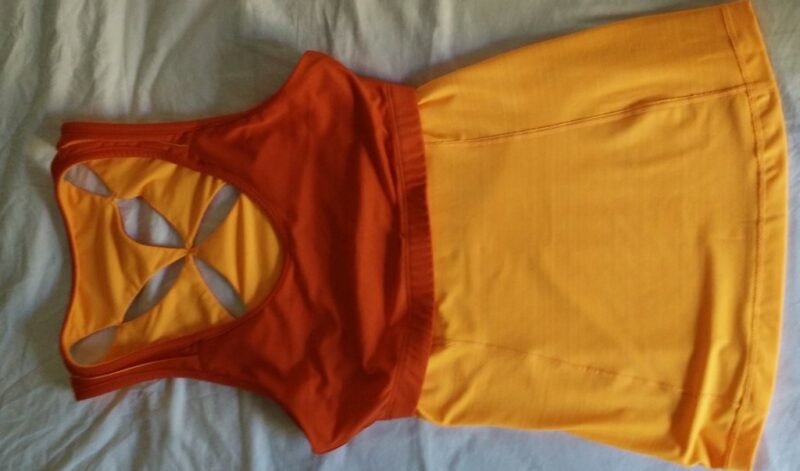
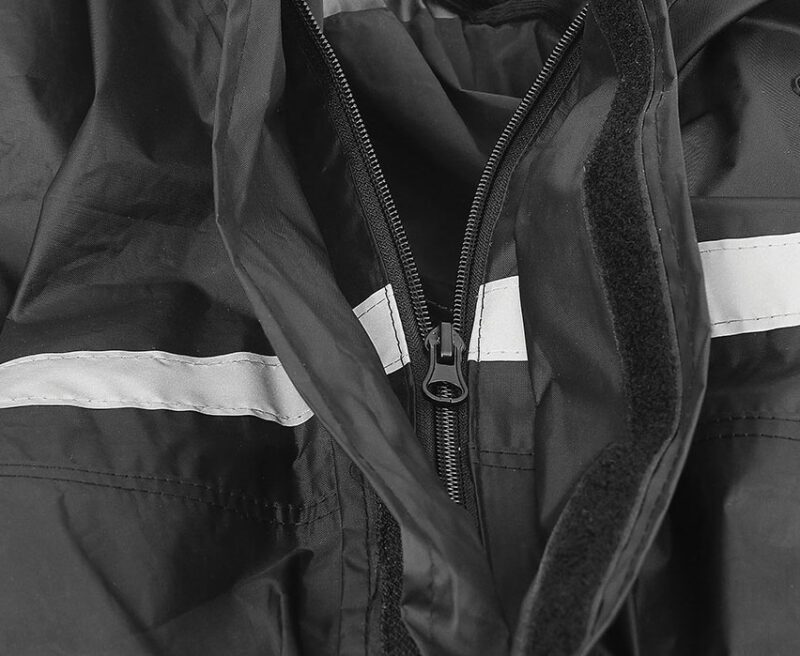
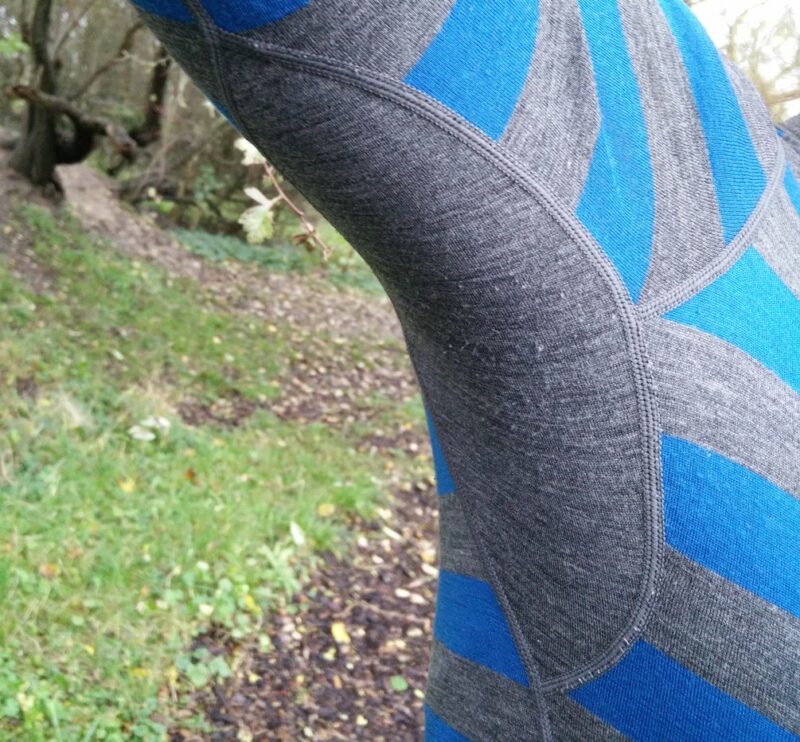
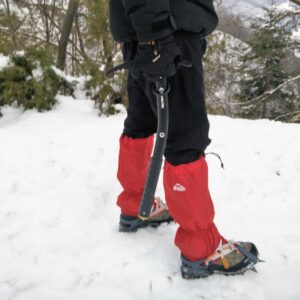
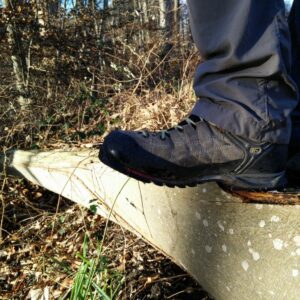

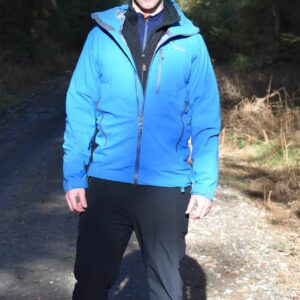











THANK YOU!